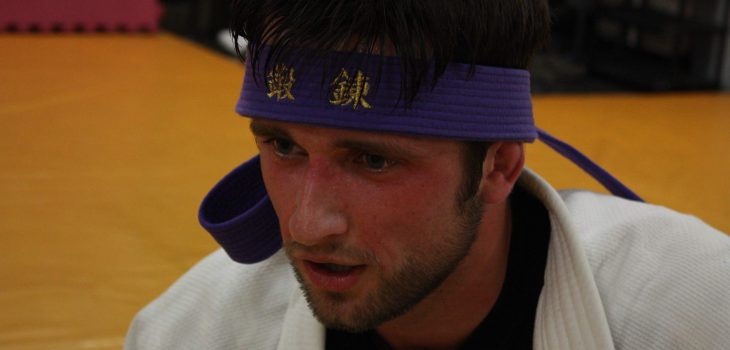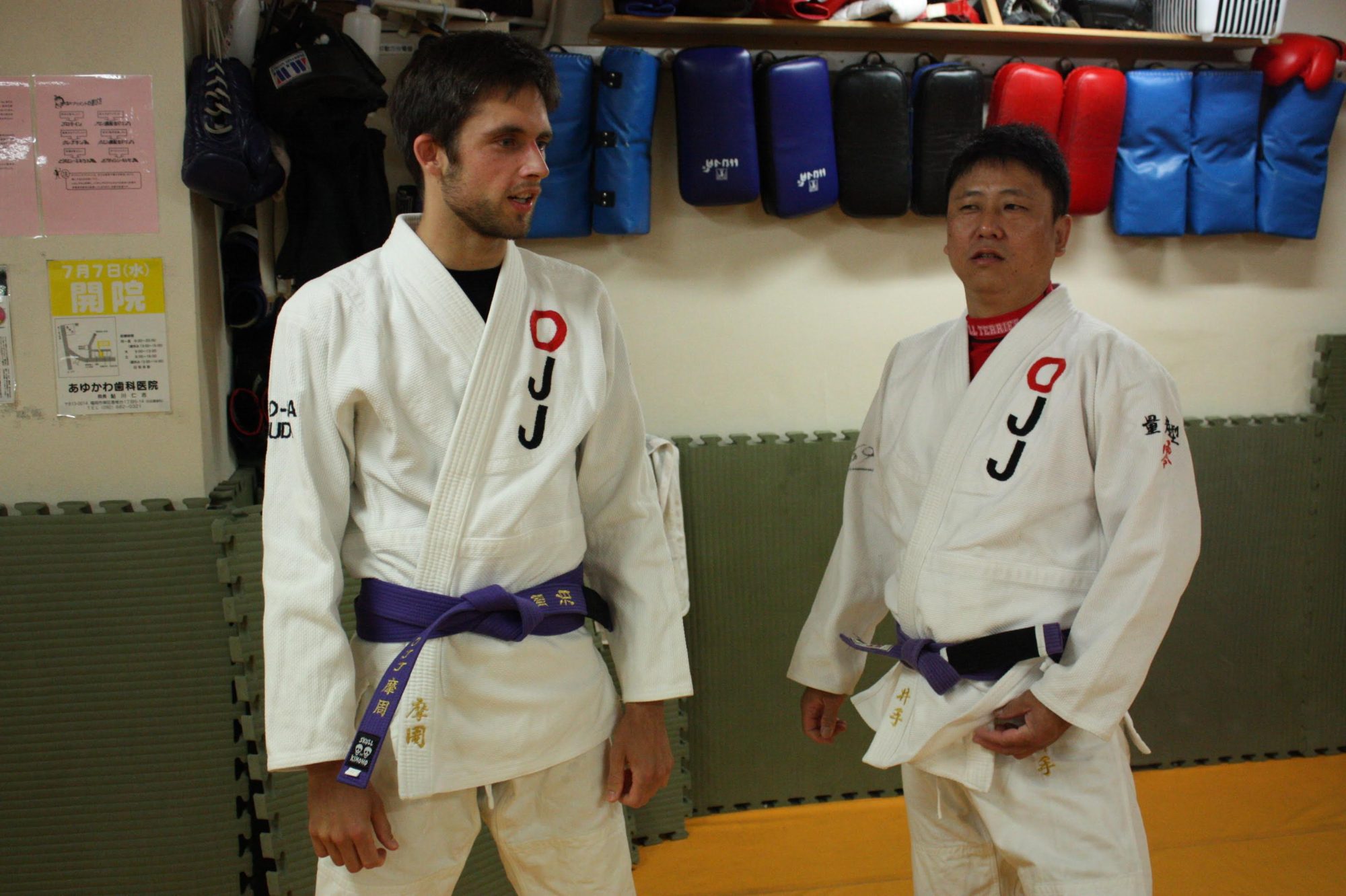 Scramblog
Scramblog So you made it to Blue Belt… Congrats.

(Sorry in advance if these pics show a purple belt, I am actually colour blind.)

So. You made it to blue belt. You didn’t quit the sucky part of jiujitsu, when literally everyone and their auntie can beat you up. Well done!
Blue belt is like a black belt for white belts, if that makes sense (it doesn’t.). It means you are certified to no longer be a beginner. It’s why so many people quit at blue belt – it’s a sign that you have achieved something remarkable. You stuck with a sport that involves literally breathing in other people’s armpit sweat directly into your face while they sit on you and try to bend your arms the wrong way around. Really good. Well done.
Here are my top five tips for Blue Belts.
DON’T QUIT NOW
Seriously. The temptation is to quit. Jiujitsu is hard, and you could quit now and say you made a good crack of it. But don’t. You have put probably 1 or 2 years of hard work into this, and only now are beginning to see the fruits of your labour. Stick with it. You have already leapt ahead of the population in terms of your ability to grapple and – no joke – can probably fairly comfortably overcome an untrained person on the ground. Do not stop training! Now is the time to cement your routine. Whether it’s with yourself – holding yourself accountable to turning up to training, or setting an agreement with your girlfriend / boyfriend / spouse – make your routine and stick with it.
BEGIN TO MAKE ‘YOUR GAME’
By now, you should have an instinctual understanding of a few things – how your body works, whether you prefer “top” (passing / attacking) or “bottom” (guard based, more passive), what moves you like and don’t like. I believe a blue belt should remain a generalist – as you are still essentially data gathering in your jiujitsu journey – but now is the time to begin to add little extra bits to your game that work particularly well for you. For example, when I was a blue belt, I preferred to play off my back. I began to develop an interest in open guard – De la Riva in particular. I would always practice what coach was showing in class, but also begin to revisit techniques from previous classes that resonated with me more. Remember, it’s all about experimentation still. Your jiujitsu career is still very much in its infancy, so take advantage of the lack of pressure on you and try everything.
COMPETE
White belt competitions are a weird mix of brand new people and hardened near-blue-belts that can really mess up your day. Blue belt is a little more standardised – it’s going to be tough, and that’s all there is to it. Starting the habit of competing will be great for your jiujitsu career. I have always likened competing to hardening the soft clay of training. It’s like a checkpoint for your jiujitsu, and the intense experience of competition can teach you multiple lessons in a short space of time. You will also get a great idea for the level of other blue belts in your area. Competing also helps to sharpen up all aspects of what you are doing – you will have to eat right to make weight, sleep well to be ready, and train harder or more frequently than usual in order to prepare. The best thing? Nobody cares about your results – literally nobody – so just compete as much as possible while you can.
WRISTLOCKS
Hahaha. It’s a running joke that the new blue belt gets wristlocked the day he or she comes into the gym with a shiny new belt, but actually wristlocks are an excellent addition to the arsenal. Plus, when the jiujitsu gods come a knocking and plop a brand new submission at the table, you damn well eat the thing with two hands – if that makes sense (it doesn’t.) But seriously, the IBJJF adds wristlocks at blue belt, and then nothing new until brown belt, so take advantage of the wristlock. It can be a great finisher from existing submissions – for example, if you have a triangle or armbar locked in but can’t quite get the finish, a quick transition to a sneaky wristlock can get you the sub.
BASICS, BASICS, BASICS, WITH A FOCUS ON ESCAPES
You might be feeling pretty confident. You can beat up the trial class guy. You should be able to handle most white belts. But chances are, upper belts are still annihilating you. The priority at blue belt should still be solid fundamentals. Attend the fundamentals class if your gym has one. Experiment with more advanced techniques sometimes but make sure to stick to the basics and try to refine them as much as possible. Pay particular attention to escapes – the longer time you can buy yourself in a bad position, the better chance you have of escaping or reversing it. There’s nothing worse than giving your all to submit someone only for them to calmy extract themselves from it and come on the counter attack. Develop that skill – stay calm under pressure and work on your escapes.